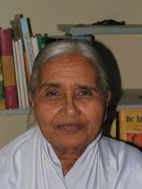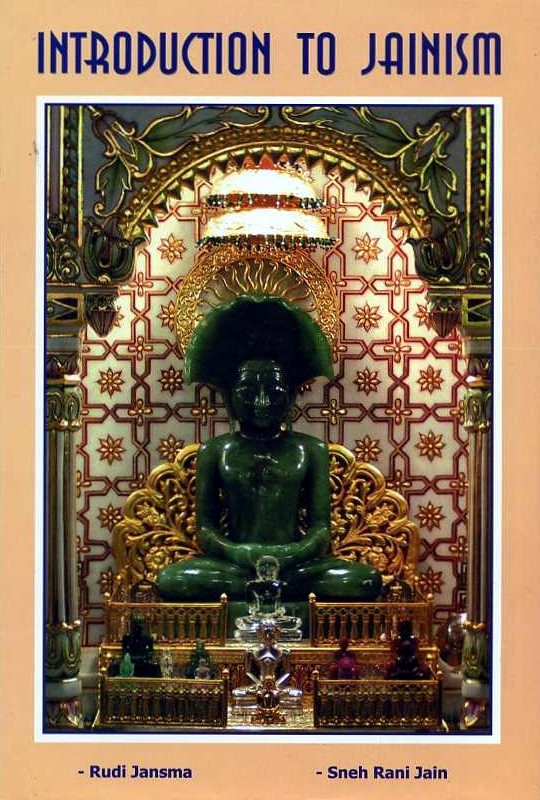A concept included in the ancient-and-modern teachings of the Jains is that of parināma, what literally means “bending” or transformation. Thanks to the observations of the Jains (and others) of the fact that forms in nature are changing continually, humankind already knew this thousands of years before the western world apparently became aware of it. The Tattvārthadhigama Sūtra says the following about this concept of transformation or modification: It “means the continuation of one’s own nature through change; transformation is the continuity of the essential nature of substances and qualities[53] through change. Parināma of a substance[54] is the change in the character of its attributes”[55] (Tattvārthadhigama Sūtra V 41). An example is change of color. The qualities are subject to change, parināma, by adopting new modes and losing old ones. All changes in the physical properties of organisms, as in the western theory of evolution, fall under the term “parināma.” The soul is regarded in Jainism as a (living) substance, i.e. something that has qualities. Examples of qualities are knowledge, energy, compassion, happiness. The uncountable number of qualities may increase or decrease, but they are always present in many (theoretically, an infinite number of) possible modes. As a logical consequence of the anekānta doctrine discussed in chapter 3 - the fundamental proposition of the Jains that truth shows itself in many different facets to the observer as long as he can not see them in their unity at the same moment[56] (i.e. when he has reached omniscience) - many properties which seemingly exclude each other can exist at the same time. Because of the complexity of the multifaceted aspects, qualities like “singularity and multiplicity,” or “eternal and evanescent,” exist at the same time. In this way all the different kinds and varieties of roses, despite their distinct features, have their innate and relatively everlasting “roseness” in common. Therefore they can together be classified as the rose family (Rosaceae). If we look at nature in the context of the scientifically accepted biological system of classification, we can ascend along a hierarchical line within the system of classification, and explain by means of the anekānta doctrine why the rose family can be classified together with the buttercup family (Ranunculaceae) in one order (the Rosales), etc. All living beings or groups of living beings have on their own level of classification a fundamental characteristic due the group’s qualities and their modes.
This of course applies not only to the physical appearance of all creatures, but also to their inner, psychological, mental and spiritual characteristics, and to what a living being feels itself attracted to.
Thus an explanation of the multiformity of nature - both around us and within us - fits within the framework of Jain philosophical thinking. Therefore Jains have no need of a creative god who performs “miracles” to create all life-forms. All beings are nothing but forms of manifestation in which nature presents herself to our eyes and consciousness.
When we approach the changes of form, which take place in nature from a Jain-scientific perspective, we conclude that every change has a cause, which ensues from the law of karma - the universal law of cause and effect. In Darwinist thinking, too, changes take place as a result of causes. But at present this philosophy does not go beyond the point of localizing this cause within the realm of “chance” - i.e. the (to us) unknown. The Jains on the other hand teach that changes are initiated by the organism itself. The aspect of an organism which brings about these changes they call the soul, or jīva - living, conscious substance. Thoughts and the emotional vibrations of the soul are the cause of a complexity of processes moving in the direction of result. On the bodily level causes express themselves in a particular form. It is therefore the inner activity of a living being which determines the form in which it will clothe itself. Thus the changes of form in nature are guided from within, and not by external influences independent of the control of the being, which inhabits the body. The soul of a frog has thus had in the foregoing incarnations of its endlessly long past, exactly those vibrations that now give it its frog body and its “frog psychology.” It will feel as a frog feels, and thus produce the corresponding vibrations, but no doubt it will also add something new through the exercises and experiences of its life - until the frog body is no longer suitable to accommodate the soul. The concept of “evolution” in the occidental sense can thus be wholly explained from the choices and preferences of souls. These choices and preferences, even though they are directed without knowledge of the results to which they will lead, cause the psychological, mental as well as physical characteristics of men, animals, plants, minerals, and even invisible beings in all worlds. The outer world around us, the environment, is the result of the totality of the inner life of all living beings. So it is the souls of the individual beings, which determine the world of forms, making use of the endless possibility of characteristics, and modes that nature offers.
 Dr. Sneh Rani Jain
Dr. Sneh Rani Jain
 Publisher:
Publisher: